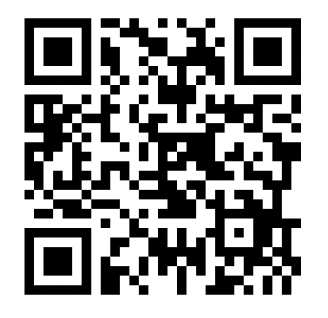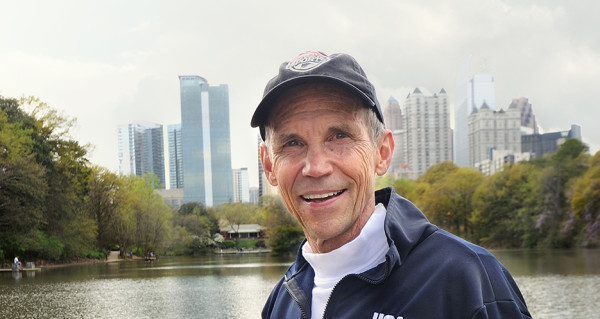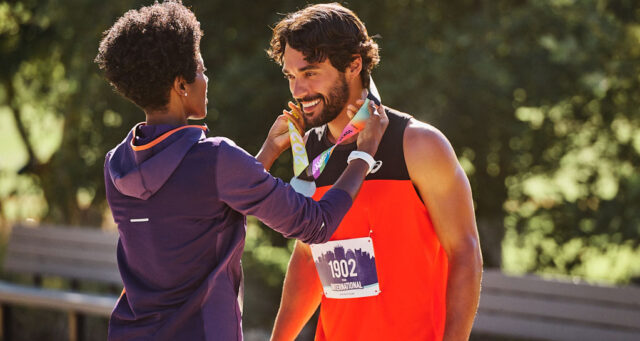If you’ve ever poked around running training plans, chances are you’ve come across the name Jeff Galloway. He’s well known for his many books on running, his work with RunDisney, and most importantly, his Run Walk Run method, which has helped thousands of people become runners. We picked his brain for insights on the benefits of walking breaks, running mantras, and getting into a running routine!
Runkeeper team: You’re famous for your Run Walk Run method. Where did it come from?
Jeff Galloway: The year after I was in the (1972) Olympics, I started my specialty running store Phidippides. One of the customers in the store asked me if I wanted to teach a class on beginner running, so I took that opportunity.
All 22 people in the beginner class had indeed not been doing any distance for at least 5 years. They were beginners. The main mission from the beginning was to keep these folks injury free, so I knew intuitively there was going to be a lot of walking. Indeed the beginning group did mostly walking with little running, the little running gradually increased a little, but by the end of the class, they were still not running more than half the time.
In the advanced groups, the guys had done other sports and were in good shape. They started out with walk breaks and some graduated to not taking any walk breaks. At the end of the 10-week class, we had a graduating event that was a 5k or a 10k; every class member finished one or the other. The amazing thing to me was that there was no injury—I realized right away that it was the walk breaks that kept them away from injury.
I started using Run Walk Run originally in a crude way with beginners. After a few years, a number of them were still using it, and running faster than veterans were. The veterans said, “how did you do this?” The whole method has evolved since then, based on the 300,00 people who have used the method.
RK: How has it evolved since then?
JG: It has been a continual evolution, mainly the configuration of running and walking. In the beginning, there were longer running segments, today instead of minutes of running and minutes of walking, it’s seconds of running, and seconds of walking. As those amounts have been reduced significantly, injuries have reduced significantly.
Another part of the program is the magic mile time trial, which allows each person to determine what their potential is and to set a safe pace for the long runs.
This is very important—the most common reason identified for injuries in distance runners is running too fast on long runs.
Most people who run too fast don’t have a clue as to what too fast is. The magic mile can tell people that. So far we haven’t found any pace that is too slow.
RK: What other benefits of Run Walk Run, beyond injury prevention?
JG: There’s a whole series of things, quicker recovery, which allows people to go up to really long, long runs, like 26-29 miles. A lot of these folks have come off the couch, have not been doing much mileage, and within 6 to 9 months, they get up to 26 to 29 miles. Not only do they not get injured, they’re able to carry on the activities of their family and career. Because of taking the walk breaks in the right formula, the individual is able to go farther on long runs than they used to.
With walk breaks, the major benefit is when you have a strategy, you always tend to do better than those who don’t have a strategy. Having a Run Walk Run strategy gives each runner control over a whole series of things: control over fatigue, control over the possible chance of injury, how they’re going to feel at the end, control over muscle fatigue, control over temperature increase. With more walking in the mix, the core body temp on hot days doesn’t rise the way it would with more running. Having control in these areas gives one a level of confidence not generated by other methods.
RK: What are the benefits of experiencing Run Walk Run through a training plan rather than trying it ad hoc?
JG: Those who have a race or have a certain distance they want to finish are much more likely to achieve that goal without problems than they are to just go out and run. If you don’t even have a goal of any type, you’re still going to reduce the chance of injury, extra fatigue, temperature build-up, and a lot of those negatives. You going to have control over all these things if you use a method. Training plans will work for people whether they use Run Walk Run or not. They still improve their times using the training schedule
RK: Some people have the mindset that if they take walk breaks during a run then it’s not really a run. How would you dispel that myth?
JG: The mindset when we learn some new activity or get involved in an activity for the very first time gets embedded in our subconscious—it’s hard-wired. Most of the PE coaches that teach kids to run have some statement somewhere along the line that you must run, that if you walk you’re a failure. Early on this mindset of having to run nonstop is embedded in the subconscious. Taking walking breaks runs counter to that programming up there—there’s anxiety that’s produced when they think about doing something that runs counter to that hardwired programming.
The way you get control over that is to have a conscious strategy, to have a few mantra statements, like: “I’m going to walk so I’ll feel better” or “I take walk breaks so I won’t puke.” The thing is, these are content-oriented with a thought, that forces the thinking process to be managed by the conscious part of the human brain, which overrides the subconscious. As long as you stay in a strategic mode, then the subconscious doesn’t start secreting those negative thoughts.
I tell folks that each person is the captain of their ship—I’m never going to try to drag anyone kicking and screaming into walk breaks. Each one of us determines the pace when they’re going to run, whether they’re going to take walk breaks, and so forth. Almost everybody who compares non-stop running with Run Walk Run is going to run faster, feel better, and have a much better experience. They’re going to be much happier when they run. I do not try to drag people into this—it works.
The person who crosses the finish line is a finisher in a race whether they sprinted, ran non-stop, took walk breaks, or walked the whole way.
RK: Do people in your program ever eliminate the walk breaks completely?
JG: Yes there is a graduation, particularly in the short run. We have an awful lot of folks who start out with liberal walk breaks, and due to their ability or prior experience, they are able to progress very quickly into some non-stop running. We still recommend the taking of walk breaks for individuals on long runs because of many many benefits, but each person is the captain of their ship.
RK: What would you recommend as the first steps for anyone getting into a running routine?
JG: I recommend that beginners build up to 30 minutes of walking that doesn’t bother them and doesn’t get them sore. Quite honestly most people can do that right away. Then you take the middle 10 minutes of that walk, and you would start running, running 5-10 seconds, and walking the rest of the minute. Over the space of about two weeks, you would gradually add a few more minutes each time you go out there, gradually taking over the 30 minutes. The next step is to take the middle 10 minutes of running and move up with another 5 seconds of jogging in each minute, reducing walking. You gradually take over with running in the same way that you did initially.
It’s continual empowerment to the individual to make those adjustments gradually. I tell people there are days that simply don’t feel good. If you don’t feel good, walk more and run less. It usually always comes back around in a few days.






